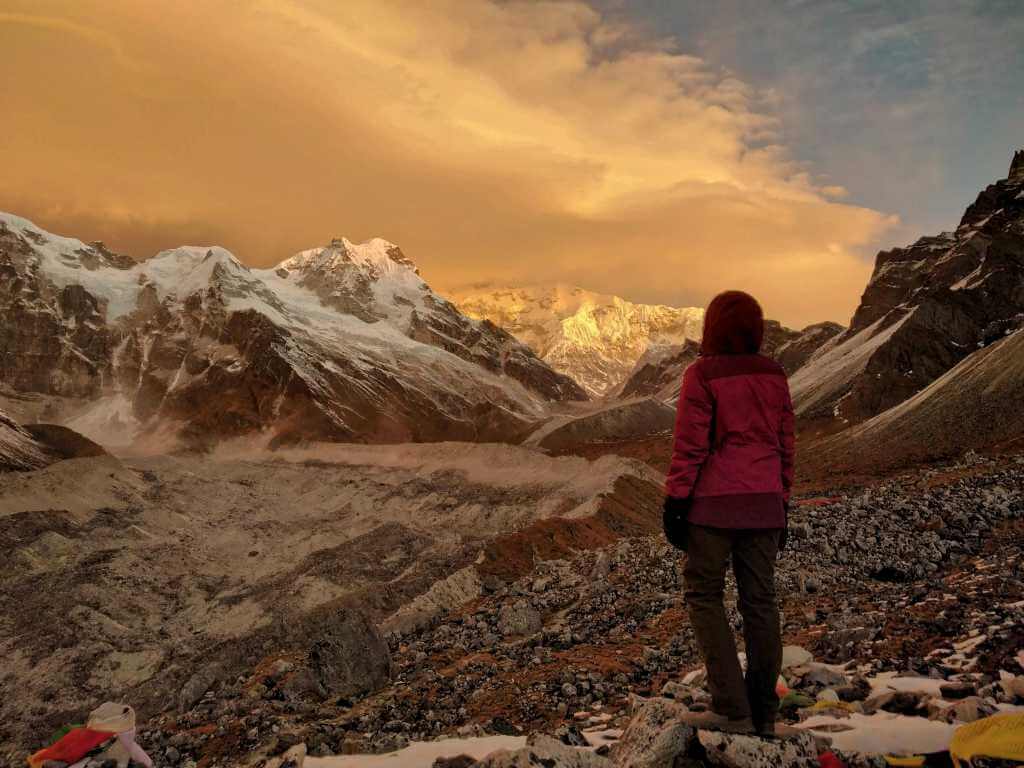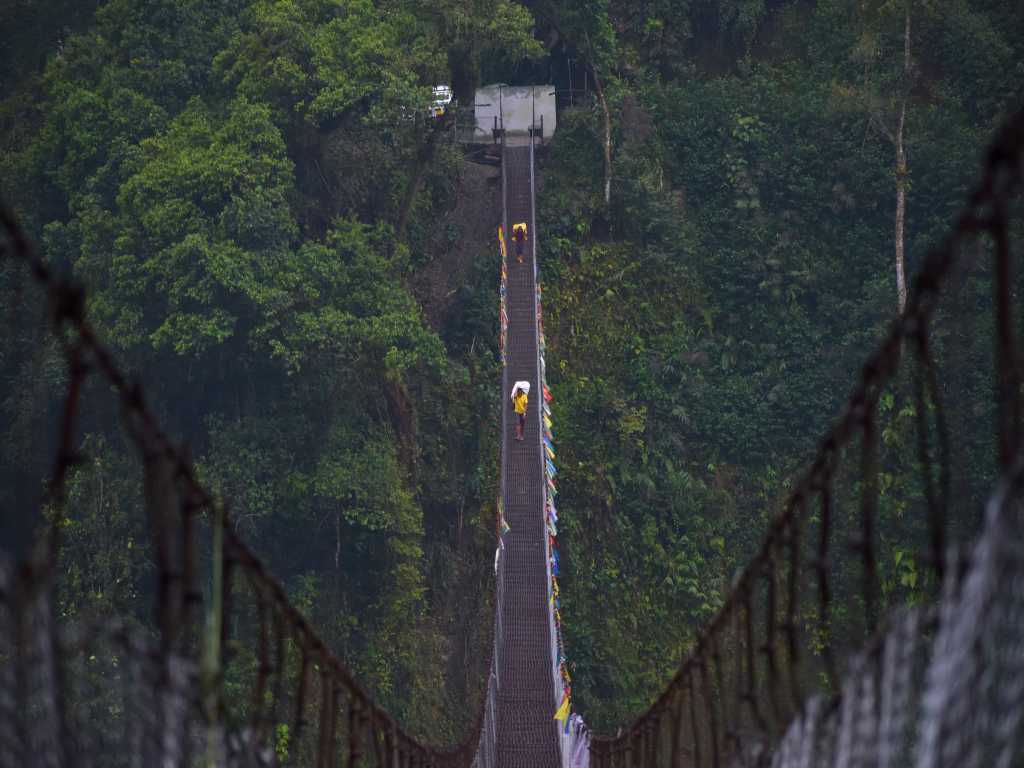SIKKIM
FREQUENTLY ASKED QUESTIONS ABOUT SIKKIM
One of India’s smallest states, Sikkim is located in North East India bordered by Bhutan to the east, Nepal to the west, Tibet to the north, and the state of West Bengal to the south. Its strategic location at the crossroads of South Asia and East Asia has facilitated trade and cultural exchanges over centuries. The state boasts diverse landscapes, from lush subtropical forests to towering snow-clad peaks, with the majestic Mount Kanchenjunga dominating the northern horizon. This geographical diversity contributes to Sikkim’s unique charm and appeals to nature lovers, trekkers, and cultural enthusiasts alike.
Briefly, Sikkim’s history traces back to indigenous tribes like the Lepchas (considered the original inhabitants) before the Namgyal dynasty, of Tibetan origin, ruled in the 17th century. It became a buffer state between British India and Tibet in the 19th century, maintaining internal autonomy under the Chogyal, the ruler of Sikkim. After India’s independence in 1947, Sikkim remained a protectorate, but political unrest led to its integration as the 22nd state of India in 1975, with the monarchy abolished. Since then, Sikkim has flourished as a scenic and culturally diverse state, emphasizing sustainable development.
Reach by Air: Travellers can reach Sikkim by air via Bagdogra Airport (IXB) in West Bengal, which is well-connected to major Indian cities like Delhi, Kolkata, and Mumbai. From Bagdogra Airport, travelers can hire taxis or opt for pre-arranged transfers to reach Sikkim. Bagdogra Airport serves as a convenient entry point for those arriving by air, offering easy access to Siliguri Junction, from where further transportation options to Sikkim are readily available. The nearest airport to Gantok however is the new Greenfield airport, the Pakyong airport which is one of the five highest airports in India at 4590 ft. The flights to this airport are not very regular and dependent on weather conditions. Additionally, for travelers seeking a unique and convenient way to explore Sikkim’s enchanting landscapes, the Sikkim Tourism Development Corporation Ltd (STDC) offers helicopter services.
Reach by Road: To reach Sikkim by road, travelers can utilize the well-maintained highways connecting neighboring states like West Bengal and Assam to Sikkim. From cities such as Siliguri and Darjeeling, shared taxis and buses are available to various destinations within Sikkim. The journey from Bagdogra Airport to Gangtok, the capital of Sikkim, typically takes around 4 to 5 hours by road. Upon arrival at Bagdogra Airport, travelers can opt for pre-booked taxis or private cars to Siliguri Junction, a major transportation hub connecting Bagdogra to Sikkim. The journey from Bagdogra Airport to Siliguri Junction takes approximately 30-45 minutes by road.
Reach By Train: For travelers opting to reach Sikkim by train, the nearest major railway station is New Jalpaiguri (NJP), located about 6-7 kilometers from Siliguri and 130 kilometers from Gangtok. From NJP, travelers can avail themselves of taxis or buses to reach Sikkim. However, it’s important to note that the train journey to NJP may involve multiple stops and transfers depending on the originating city. Once at NJP, travelers can easily find transportation options to proceed to their desired destinations in Sikkim.
Sikkim’s ideal months for visiting are March to June and September to November. During spring (March to May), the weather is pleasant, with blooming flowers (Rhododendrons Treks) adding vibrancy to the landscape. Along with October time, April-May is the high season the state for amazing leisure tours and road trips. The monsoon season, from June to August, brings heavy rainfall, which can lead to landslides and roadblocks, making travel challenging. However, post-monsoon (September to November) offers clear skies, perfect for trekking and local sightseeing. Winter (December to February) brings cold temperatures and occasional snowfall, particularly in higher altitudes. Some roads do get blocked at this time. The winter is usually a slightly less popular time for tourists but an awesome time for those looking to find snow.
Sikkim is blessed with breathtaking natural beauty and rich cultural heritage, offering numerous must-visit destinations for travelers. Some of the popular places to explore in Sikkim include:
Gangtok: The capital city of Sikkim, Gangtok, is a vibrant blend of modernity and tradition. Visit the Gagngok Ropeway Enchey Monastery, Tibetology institue, and Do Drul Chorten to experience Sikkim’s spiritual side. Don’t miss the awe-inspiring views of the Kanchenjunga range from the Tashi Viewpoint and the Ganesh Tok.
Tsomgo Lake (Changu Lake): Located at an altitude of 12,313 feet, Tsomgo Lake is a mesmerizing glacial lake surrounded by rugged mountains. It’s accessible from Gangtok and offers stunning views, especially during winter when it freezes over.
Nathu La Pass: For a glimpse of the Indo-China border, head to Nathula Pass, situated at an altitude of 14,140 feet. Visitors can enjoy panoramic views of the Himalayas and visit the historic border post.
Pelling: Known for its panoramic views of the Himalayas, Pelling is a serene hill station adorned with lush forests, waterfalls, and ancient monasteries. Visit the Pemayangtse Monastery and Sangachoeling Monastery for a spiritual retreat.
Chopta Valey, Thangu, Lachung and Lachen: These picturesque villages in North Sikkim are gateways to some of the most beautiful landscapes in the region. Visit the Yumthang Valley, renowned as the Valley of Flowers, and the Gurudongmar Lake, one of the highest lakes in the world.
Apart from these, there are many unique and offbeat hamlets like Yuksom, Ravangla, Dzongu Valley etc. that wow visitors who are looking for peace and serenity away from the crowded places
These are just a few of the must-visit places in Sikkim, each offering a unique blend of natural beauty, cultural heritage, and spiritual significance. Whether you’re seeking adventure, tranquility, or cultural immersion, Sikkim has something to offer for every traveler.
Although Sikkim is a small state, it’s important to note that the terrain is mountainous and it requires lot of time to go from one destination to another. To experience the diverse offerings of Sikkim, on average it’s recommended to spend at least 6-8 days exploring the region. This duration allows for a basic tour of popular destinations with a few offbeat ones as well. Additionally, it provides time for leisurely exploration, cultural immersion, and adventurous activities.
Sikkim caters to a wide range of budgets, offering options from budget guesthouses to luxury resorts. Generally, accommodation and food are affordable, especially in local eateries and homestays. Transportation costs may vary depending on the mode of travel, with shared taxis being a common and relatively inexpensive option for getting around. However, activities such as trekking permits or guided tours may incur additional expenses. Overall, compared to other tourist destinations, Sikkim can be considered reasonably priced.
Before embarking on a trip to Sikkim, it’s essential to plan adequately. This includes packing appropriate clothing for varying weather conditions, including layers for cold temperatures in higher altitudes. Make sure to obtain or plan any necessary permits, especially for restricted areas like North Sikkim, well in advance. Familiarize yourself with local customs and etiquettes. Additionally, research and plan your itinerary carefully, considering factors like altitude sickness and travel times between destinations. If you choose us to curate a Sikkim trip for you, we will make sure you are well-prepared and are aware of all the necessary things required for leisure journey or trekking adventures.
Phone connectivity in Sikkim has significantly improved in recent years, particularly in urban and semi-urban areas. In major cities and towns like Gangtok, Namchi, and Pelling, you can expect good mobile network coverage from major service providers like Airtel, Jio, Vodafone Idea, and BSNL. However, in more remote or mountainous regions, especially in North Sikkim or areas near the border, network coverage may be limited or intermittent.
While traveling through rural or remote areas of Sikkim, it’s advisable to have a SIM card from one of the major service providers mentioned above, as they tend to have better coverage compared to smaller regional carriers. Additionally, certain valleys or mountainous terrains may experience signal fluctuations, so it’s always a good idea to inform friends or family about your whereabouts if you’re venturing into such areas.
In terms of internet connectivity, major towns and tourist hubs generally have access to 3G or 4G networks, allowing for reasonably fast internet speeds. However, internet connectivity may be slower or unavailable in more remote areas. It’s recommended to download offline maps or important information before traveling to ensure access to essential resources even in areas with limited connectivity.
Sikkim is renowned for its breathtaking natural beauty, encompassing snow-capped mountains, lush valleys, and pristine lakes. It is home to the majestic Kanchenjunga, the third-highest peak in the world, which attracts trekkers and mountain lovers from around the globe. Additionally, Sikkim’s rich cultural heritage, with diverse ethnic groups coexisting harmoniously, adds to its allure. The state celebrates numerous vibrant festivals, including Losar (Tibetan New Year), Saga Dawa (Buddha Jayanti), and Dasain (Dashain), showcasing its cultural vibrancy. Sikkim is also known to a fully organic state since 2016. Its commitment to environmental conservation and sustainable tourism has also gained international recognition, further enhancing its reputation as a unique and enchanting destination.
Sikkim Tour Packages - Curated and Personalized
Sikkim is our little Himalayan wonderland nestled in the North-Eastern part of India. The tourism map of Sikkim comes with magnetic views of the great Himalayas. Located to the south of Tibet, the place is sandwiched between Nepal to the west and Bhutan to the east.
It is a beautiful patchwork of lush green valleys, subtropical jungles, high altitude lakes, rolling green mountains, colourful rhododendron groves, and soaring snow-laden white mountains.
The state is divided into 4 districts: North, South, East and West. With scenic villages and tea gardens in the south, ancient Buddhist monasteries and sacred lakes in the west, the historic silk route to its east and a rugged tibet-like Himalayan wilderness to its north – the place offers a huge range of experiences for leisure travellers as well as adventure seekers. It is the perfect example of how awesome things come in small packages.
Sikkim is also home to the world’s third highest mountain. The majestic Mt. Kanchenjunga stands tall as the guardian deity for the locals, revered and worshipped by all. Many Sikkim tour packages are organised such as Gorkhey Khola, Singalila Pass, Gurudongmar Lake And Yumthang Valley keeping the mountain as the main highlight.
It is visible from many viewpoints in the state with Pelling, Dzongu and Gangtok providing some of the most alluring views of the mountain. The multi-day Trek to Goecha La takes you face to face with the mighty mountain. This trail is often skipped by standard and common Sikkim tour packages that mainly focus on the capital city and other touristy sections.
The state has an eclectic mix of people from various communities and cultures – it is a rich, multilingual and multicultural society with Nepali Hindus, Buddhists and indigenous peoples, including the Lepchas and Bhutias living side by side.
Each community has their own traditions, beliefs and customs. The mesmerizing charm of the state’s vibrant cultures, unique local customs and the delicious organic cuisine makes it even more fascinating, trekking and interesting to explore. The state is also an environmental frontrunner. Sikkim became the first fully organic state in the world.
With an aim to preserve the environment, its fragile ecosystem and rich biodiversity, the state is geared towards providing a healthier life for all its people. Our Sikkim tour packages are carefully curated and personalized to provide you some of the most unique and amazing experiences here.







